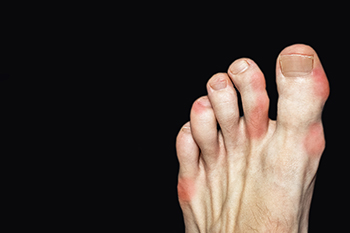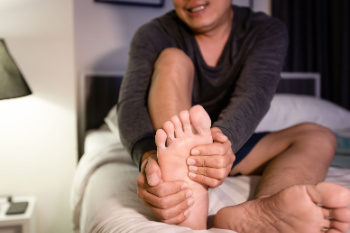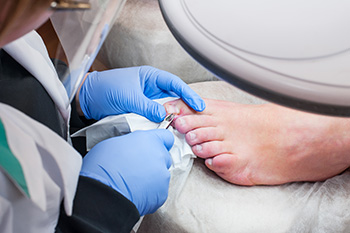
Wilmington (937) 382-2347
Fax
(513) 932-1606

Wilmington (937) 382-2347
Fax
(513) 932-1606
 Running is often considered a contact sport due to the repeated impact of the feet striking the ground. To avoid injuries while running, it is important to follow some key tips. Begin with a proper warm-up to prepare your muscles and joints for the activity ahead. Running at an easy pace most of the time allows your body to adapt to the stresses of running, reducing the risk of overuse injuries. Gradually increasing your running intensity and distance helps to build endurance and strength safely. Incorporate strength training exercises to enhance muscle stability and support your joints. Pay attention to your running form, maintaining an upright posture and a mid-foot strike to distribute impact forces evenly. Wearing appropriate, well-fitted running shoes is essential to provide the necessary support and cushioning. Lastly, listen to your body, and rest if you feel pain or discomfort. If you are a runner, to get the most out of your sport, it is suggested that you seek personalized advice and injury prevention strategies from a podiatrist.
Running is often considered a contact sport due to the repeated impact of the feet striking the ground. To avoid injuries while running, it is important to follow some key tips. Begin with a proper warm-up to prepare your muscles and joints for the activity ahead. Running at an easy pace most of the time allows your body to adapt to the stresses of running, reducing the risk of overuse injuries. Gradually increasing your running intensity and distance helps to build endurance and strength safely. Incorporate strength training exercises to enhance muscle stability and support your joints. Pay attention to your running form, maintaining an upright posture and a mid-foot strike to distribute impact forces evenly. Wearing appropriate, well-fitted running shoes is essential to provide the necessary support and cushioning. Lastly, listen to your body, and rest if you feel pain or discomfort. If you are a runner, to get the most out of your sport, it is suggested that you seek personalized advice and injury prevention strategies from a podiatrist.
All runners should take extra precaution when trying to avoid injury. If you have any concerns about your feet, contact Dr. Gerald Perelman of Ohio. Our doctor will treat your foot and ankle needs.
How to Prevent Running Injuries
There are a lot of mistakes a runner can make prior to a workout that can induce injury. A lot of athletes tend to overstretch before running, instead of saving those workouts for a post-run routine. Deep lunges and hand-to-toe hamstring pulls should be performed after a workout instead of during a warmup. Another common mistake is jumping into an intense routine before your body is physically prepared for it. You should try to ease your way into long-distance running instead of forcing yourself to rush into it.
More Tips for Preventing Injury
If you have any questions, please feel free to contact our office located in Wilmington, OH . We offer the newest diagnostic and treatment technologies for all your foot care needs.
 Gout is a type of arthritis that causes sudden, severe attacks of pain, redness, and tenderness in joints, often affecting the feet. It occurs when urate crystals accumulate in the joints, causing inflammation and intense pain. These crystals form when there are high levels of uric acid in the blood. The body produces uric acid when it breaks down purines, substances found naturally in the body, and certain foods. Gout can affect anyone, but it is more common in men, postmenopausal women, and individuals with kidney disease or a family history of gout. In the feet, gout typically impacts the big toe, but it can also affect other parts like the ankles and heels. The pain can be excruciating, described as a burning or stabbing sensation, often waking individuals from sleep. Swelling, redness, and warmth in the affected area are common symptoms. To manage gout, lifestyle changes such as diet modification, weight loss, and avoiding alcohol are recommended. Medications to reduce uric acid levels and inflammation may also be prescribed. If you experience severe foot pain due to gout, it is suggested that you schedule an appointment with a podiatrist for targeted treatment and management strategies.
Gout is a type of arthritis that causes sudden, severe attacks of pain, redness, and tenderness in joints, often affecting the feet. It occurs when urate crystals accumulate in the joints, causing inflammation and intense pain. These crystals form when there are high levels of uric acid in the blood. The body produces uric acid when it breaks down purines, substances found naturally in the body, and certain foods. Gout can affect anyone, but it is more common in men, postmenopausal women, and individuals with kidney disease or a family history of gout. In the feet, gout typically impacts the big toe, but it can also affect other parts like the ankles and heels. The pain can be excruciating, described as a burning or stabbing sensation, often waking individuals from sleep. Swelling, redness, and warmth in the affected area are common symptoms. To manage gout, lifestyle changes such as diet modification, weight loss, and avoiding alcohol are recommended. Medications to reduce uric acid levels and inflammation may also be prescribed. If you experience severe foot pain due to gout, it is suggested that you schedule an appointment with a podiatrist for targeted treatment and management strategies.
Gout is a painful condition that can be treated. If you are seeking treatment, contact Dr. Gerald Perelman from Ohio. Our doctor will treat your foot and ankle needs.
What Is Gout?
Gout is a form of arthritis that is characterized by sudden, severe attacks of pain, redness, and tenderness in the joints. The condition usually affects the joint at the base of the big toe. A gout attack can occur at any random time, such as the middle of the night while you are asleep.
Symptoms
Risk Factors
Prior to visiting your podiatrist to receive treatment for gout, there are a few things you should do beforehand. If you have gout you should write down your symptoms--including when they started and how often you experience them, important medical information you may have, and any questions you may have. Writing down these three things will help your podiatrist in assessing your specific situation so that he or she may provide the best route of treatment for you.
If you have any questions, please feel free to contact our office located in Wilmington, OH . We offer the newest diagnostic and treatment technologies for all your foot care needs.
 Plantar fasciitis significantly impacts quality of life, primarily due to persistent heel pain. This condition involves inflammation of the plantar fascia, a thick band of tissue running along the bottom of the foot, often resulting in stabbing pain, particularly during the first steps in the morning or after periods of inactivity. The pain can range from a dull ache to sharp discomfort, making walking, standing, and engaging in daily activities challenging. Symptoms can include heel pain, stiffness, and swelling. Common causes are overuse, wearing improper footwear, obesity, and excessive standing or walking on hard surfaces. Relief options include rest, stretching exercises, proper footwear, and orthotic devices to provide arch support. In severe cases, medical interventions such as corticosteroid injections or surgery might be necessary. If you suffer from plantar fasciitis, it is suggested that you schedule an appointment with a podiatrist to manage it and prevent further complications.
Plantar fasciitis significantly impacts quality of life, primarily due to persistent heel pain. This condition involves inflammation of the plantar fascia, a thick band of tissue running along the bottom of the foot, often resulting in stabbing pain, particularly during the first steps in the morning or after periods of inactivity. The pain can range from a dull ache to sharp discomfort, making walking, standing, and engaging in daily activities challenging. Symptoms can include heel pain, stiffness, and swelling. Common causes are overuse, wearing improper footwear, obesity, and excessive standing or walking on hard surfaces. Relief options include rest, stretching exercises, proper footwear, and orthotic devices to provide arch support. In severe cases, medical interventions such as corticosteroid injections or surgery might be necessary. If you suffer from plantar fasciitis, it is suggested that you schedule an appointment with a podiatrist to manage it and prevent further complications.
Plantar fasciitis is a common foot condition that is often caused by a strain injury. If you are experiencing heel pain or symptoms of plantar fasciitis, contact Dr. Gerald Perelman from Ohio. Our doctor can provide the care you need to keep you pain-free and on your feet.
What Is Plantar Fasciitis?
Plantar fasciitis is one of the most common causes of heel pain. The plantar fascia is a ligament that connects your heel to the front of your foot. When this ligament becomes inflamed, plantar fasciitis is the result. If you have plantar fasciitis you will have a stabbing pain that usually occurs with your first steps in the morning. As the day progresses and you walk around more, this pain will start to disappear, but it will return after long periods of standing or sitting.
What Causes Plantar Fasciitis?
There are some risk factors that may make you more likely to develop plantar fasciitis compared to others. The condition most commonly affects adults between the ages of 40 and 60. It also tends to affect people who are obese because the extra pounds result in extra stress being placed on the plantar fascia.
Prevention
There are a variety of treatment options available for plantar fasciitis along with the pain that accompanies it. Additionally, physical therapy is a very important component in the treatment process. It is important that you meet with your podiatrist to determine which treatment option is best for you.
If you have any questions, please feel free to contact our office located in Wilmington, OH . We offer the newest diagnostic and treatment technologies for all your foot care needs.
 Ingrown toenails occur when the nail grows into the surrounding skin, which causes pain and has a potential for infection. Podiatrists, or foot doctors, can treat ingrown toenails through a variety of procedures depending on the severity. For less severe cases, a podiatrist may carefully trim the ingrown portion of the nail and instruct the patient on proper nail care techniques to prevent recurrence. If the ingrown toenail is more problematic or keeps coming back, a podiatrist might perform a partial nail avulsion. This involves numbing the toe and then removing the ingrown section of the nail. In some cases, a podiatrist may also apply a chemical called phenol to the affected nail root to prevent the problematic portion of the nail from growing back. These procedures are generally quick, done with minimal discomfort, and allow patients to return to daily activities fairly quickly. If you are suffering with an ingrown toenail, it is suggested that you consult a podiatrist for treatment and to prevent the ingrown toenail from returning.
Ingrown toenails occur when the nail grows into the surrounding skin, which causes pain and has a potential for infection. Podiatrists, or foot doctors, can treat ingrown toenails through a variety of procedures depending on the severity. For less severe cases, a podiatrist may carefully trim the ingrown portion of the nail and instruct the patient on proper nail care techniques to prevent recurrence. If the ingrown toenail is more problematic or keeps coming back, a podiatrist might perform a partial nail avulsion. This involves numbing the toe and then removing the ingrown section of the nail. In some cases, a podiatrist may also apply a chemical called phenol to the affected nail root to prevent the problematic portion of the nail from growing back. These procedures are generally quick, done with minimal discomfort, and allow patients to return to daily activities fairly quickly. If you are suffering with an ingrown toenail, it is suggested that you consult a podiatrist for treatment and to prevent the ingrown toenail from returning.
Ingrown toenails may initially present themselves as a minor discomfort, but they may progress into an infection in the skin without proper treatment. For more information about ingrown toenails, contact Dr. Gerald Perelman of Ohio. Our doctor can provide the care you need to keep you pain-free and on your feet.
Ingrown Toenails
Ingrown toenails are caused when the corner or side of a toenail grows into the soft flesh surrounding it. They often result in redness, swelling, pain, and in some cases, infection. This condition typically affects the big toe and may recur if it is not treated properly.
Causes
You are more likely to develop an ingrown toenail if you are obese, have diabetes, arthritis, or have any fungal infection in your nails. Additionally, people who have foot or toe deformities are at a higher risk of developing an ingrown toenail.
Symptoms
Some symptoms of ingrown toenails are redness, swelling, and pain. In rare cases, there may be a yellowish drainage coming from the nail.
Treatment
Ignoring an ingrown toenail can have serious complications. Infections of the nail border can progress to a deeper soft-tissue infection, which can then turn into a bone infection. You should always speak with your podiatrist if you suspect you have an ingrown toenail, especially if you have diabetes or poor circulation.
If you have any questions, please feel free to contact our office located in Wilmington, OH . We offer the newest diagnostic and treatment technologies for all your foot care needs.